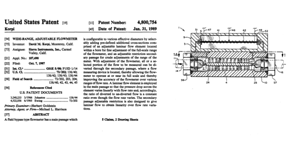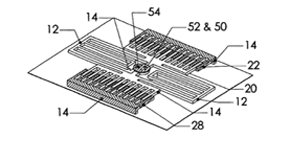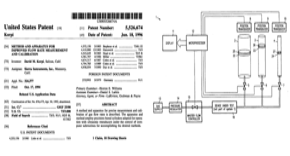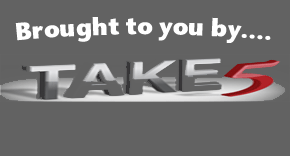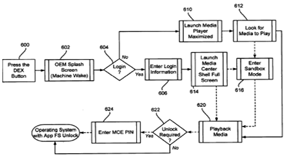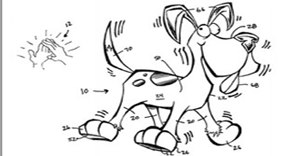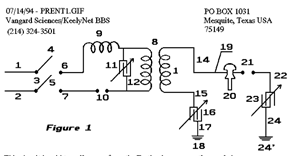OK.. You can NOT select your patent examiner…
Guys and gals… Did you know that some patent examiners PRIDE themselves in NEVER allowing patents? And others LOVE to allow patents? And.. you can NOT select your examiner.. To learn more about how this works look at the study from the Stanford Technology Law Review read on.
It is disturbing to say the least…
My PERSONAL experience jives with the non-signatory “newbie examiners” are the absolute WORST.. It is BEST to ask for the supervisor in that case but you have to be VERY careful not to insult anyone.. Egos are even strong in the USPTO… They are just a bunch of people like us by golly!
From: Patent Law Blog (Patently-O)
Apr 26, 2012
Guest Post by Dr. Shine Tu: Luck/Unluck of the Draw: An Emprical Study of Examiner Allowance Rates
Dr. Shine Tu is an Associate Professor of Law at the West Virginia University College of law. For the past year, Dr. Tu, a former patent attorney with Foley & Lardner, has conducted a massive empirical examination of patent prosecution. Massive, in the sense that Dr. Tu and his assistants examined the prosecution behavior of every patent issued in the last ten years. In Luck/Unluck of the Draw: An Empricial Study of Examiner Allowance Rates, available at http://papers.ssrn.com/sol3/papers.cfm?abstract_id=1939508 and forthcoming in the Stanford Technology Law Review, Dr. Tu discusses some of the findings from his study. – Jason
Luck/Unluck of the Draw: An Emprical Study of Examiner Allowance Rates
Dr. Shine Tu
One of the greatest banes of a patent applicant is the examiner who will not allow an application that should be allowable. During a trip to the PTO for an Examiner interview, I passed by the office of Examiner X with a sign that stated “0% allowance rate ☺ [ed.: smiley face].” Evidently, the smiley face was inserted to add insult to injury. I asked the examiner that I was with if Examiner X really had a 0% allowance rate, and she said “yes.” (I later verified that this was correct) I asked why this was the case, and she stated, “some examiners believe an allowance is an affront to their being.” Of course, our patent system would be a complete failure if the ability to get a patent was solely determined by which examiner you were lucky/unlucky enough to draw.
In an attempt to determine the extent of this behavior, I set out to comprehensively study allowance rates of specific examiners by art unit, technology center and the PTO as a whole. To be as comprehensive as possible, I coded over 1.5 million patents in an attempt to code every patent ever issued in the last 10 years (from January 2001-July 2011).
The results of this study were surprising. I found two interesting populations of examiners. First, I found a significant population of examiners who on average, issue a disproportionately small number of patents per year (low allowance rate examiners). Second, I found a small but significant population of examiners, who on average, issue a disproportionately large number of patents per year (high allowance rate examiners).
The first population of low allowance rate examiners consist mainly of secondary examiners (junior examiner usually with less than 5 years of experience and no signatory authority). These examiners, on average, issue a very small number of patents per year (less than 5 patents per year). For example, between 2002-2011 in technology center 3700, approximately 17% (306 examiners) of the examiners issued less than 0.35% (823 patents) of the patents in this art unit. Accordingly, these low allowance rate examiners issued approximately 2.7 patents per examiner.
In contrast, I found a second population of high allowance rate examiners that consist mainly of primary examiners (senior examiners usually with more than 5 years of experience and full signatory authority). These examiners, on average, issue a high number of patents per year (more than 50 patents per year). For example, between 2002-2011 in technology center 3700, approximately 12% (215 examiners) of the examiners issued approximately 51% (120,822 patents) of the patents in this art unit. Accordingly, these high allowance rate examiners issued approximately 561.9 patents per examiner.
There are many good reasons why an application should not be allowed. However, one reason that should not play a role is an uneven / inconsistent application of patentability rules. Examiners should be consistent in the way they apply patentability rules within their own docket. Additionally, examiners should be consistent in the way they apply patentability rules compared to examiners within their art unit. This study suggests that examiners even within the same art unit may be applying the rules of patentability in an inconsistent manner.
There are many limitations with this study. First, I note that there is no ideal allowance rate. Second, I note that this is only descriptive data. Finally, I note that I focus only on issued patents. I could not obtain data related to the total number of filed applications for each art unit, thus I cannot calculate the percentage allowance rate per art unit (because I do not have a denominator of “filed applications”). This is a significant limitation because all of these results are limited by the “denominator” problem.
Additionally, it is possible both populations of examiners are doing an outstanding job. That is, it is possible that the low volume examiners are simply getting harder cases (but I am skeptical of this explanation). Additionally, it is possible that the low volume examiners are “doing a more thorough job” since they are mainly secondary examiners and thus have more time to spend per application for review and detailed analysis. Furthermore, it is possible that high volume examiners are doing an adequate job because they are simply more experienced and not only know the field better, but know how to quickly make “good” rejections. In order to obtain some substantive answers to overcome these limitations, I am currently reviewing a sample of prosecution histories to determine if these two populations of examiners truly are applying the patentability rules in an inconsistent manner.
A full draft of “Luck/Unluck of the Draw: An Empirical Study of Examiner Allowance Rates” is available on SSRN at http://papers.ssrn.com/sol3/papers.cfm?abstract_id=1939508 and is forthcoming in the Stanford Technology Law Review.

